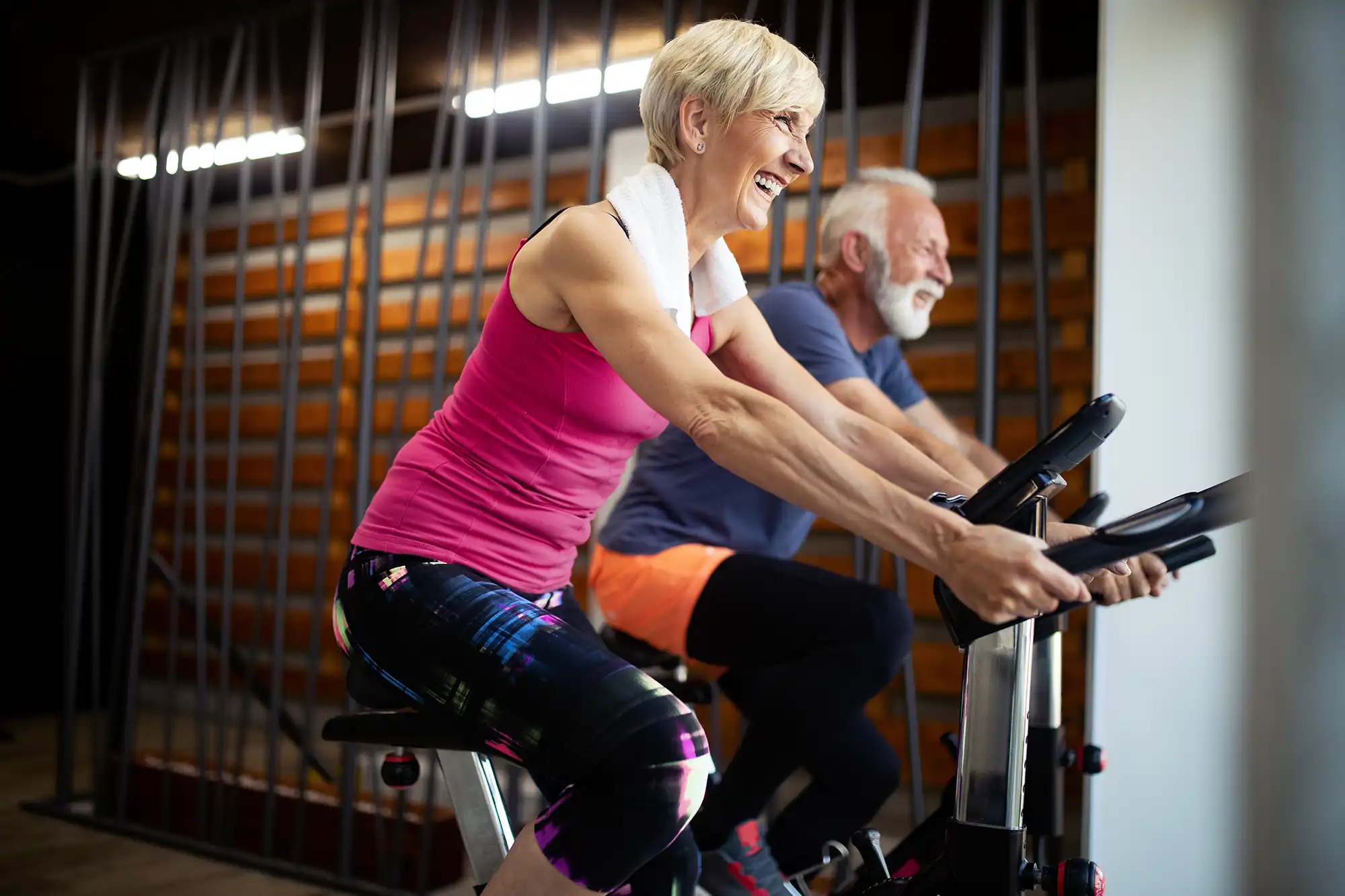How Active Is Active?
If you're (re)starting your journey toward wellness and physical fitness, it can be confusing to figure out how your current activity level stacks up against your ideal activity level. And what is your ideal activity level? Fortunately, you don't have to spend hours scouring studies to find out: the Federal 2018 Physical Activity Guidelines Advisory Committee did the hard work for you. The second edition of the Physical Activity Guidelines for Americans published in 2018 "provides guidance on the amounts and types of physical activity necessary to maintain or improve overall health and reduce the risk of, or even prevent, chronic disease" (Physical Activity Guidelines for Americans, 2nd Edition). The full guide is over 100 pages, but it's built for skimming, with a navigable table of contents to direct you to sections most applicable to your situation. But if you're short on time, here are some key takeaways for your easy reference:
What Is Physical Fitness?
Physical fitness is defined as "the ability to carry out daily tasks with vigor and alertness, without undue fatigue, and with ample energy to enjoy leisure-time pursuits and respond to emergencies.” The components of physical fitness are:
-
Cardiorespiratory Fitness (endurance or aerobic power)
-
Musculoskeletal Fitness
-
Flexibility
-
Balance
-
Speed of Movement
Key Guideline Target Range of Aerobic Physical Activity for Adults
Adults gain substantial health benefits by engaging in at least:
150 to 300 minutes of moderate-intensity aerobic physical activity/week
OR 75 to 150 minutes of vigorous-intensity aerobic physical activity/week
OR some equivalent combination thereof, preferably spread throughout the week
+ other physical activities of moderate or greater intensity, such as muscle-strengthening, balance, flexibility, etc.
Levels of Intensity
Aerobic activity intensity can be tracked either as the amount of energy expended during the activity regardless of individual fitness levels, or as the level of effort required to do an activity, which allows for the difference in how much effort an activity might take a less fit person to do vs. a fitter person.
Light-Intensity:
-
non-sedentary waking behavior requiring less than 3x the energy expended at rest
-
Examples: walking at 2.5 mph or less, light housework, cooking
Moderate-Intensity:
-
requires 3-6x the energy expended at rest, or rated as a 5 or 6 in effort on a scale of 0-10, 0 being sitting, 10 being the most effort
-
Examples: walking briskly at 2.5 mph+, recreational swimming, doubles tennis, power or Vinyasa yoga, yard work
Vigorous-Intensity:
-
requires >6x the energy expended at rest, or rated as a 7 or 8 in effort on a scale of 0-10, 0 being sitting, 10 being the most effort
-
Examples: jogging or running, hiking uphill or under load, high-intensity interval training (HIIT), exercise classes like kickboxing, vigorous dancing, heavy yard work (that increases heart rate)
One easy rule of thumb to follow if you're not sure what intensity level you're at is the Talk Test. If you can carry on a conversation but not sing, you're in the moderate-intensity range. If you can't speak more than a few words without needing to take a breath, you've moved into vigorous territory.
Categories of Activity Levels
The Guidelines classify adults into four levels of aerobic* physical activity:
-
Inactive: not doing any moderate- to vigorous-intensity activity beyond basic daily activities
-
Insufficiently Active: doing some moderate- to vigorous-intensity activity, but less than 150 minutes of moderate-intensity activity or 75 minutes of vigorous-intensity activity per week, or an equivalent combination thereof
-
Active: doing the equivalent of 150-300 minutes of moderate-intensity activity per week (the key guideline target range for adults)
-
Highly Active: doing the equivalent of 300+ minutes of moderate-intensity activity per week
*Muscle-strengthening and other types of physical activities are just as important, but aerobic activity underpins this classification.
Once you have an idea of your current activity level, you can begin to build towards the next level. If you have an injury, a chronic condition, or another health consideration that limits your ability to meet the Key Guideline Target Range of 150+ minutes/week of moderate-intensity aerobic physical activity, it's important to remember that anything is better than nothing. The bottom line is to spend less time sitting and more time doing. Do as much activity as you safely can and keep your doctor in the loop as you explore expanding your range, length, and/or intensity of activities.
Another huge takeaway from the Guidelines is this: the risk of injury or an adverse health event like a heart attack is far outweighed by the risks associated with not engaging in physical activity. That means you should not automatically default to inactivity if you're worried about injuring yourself. There are lots of ways to move your body, and just because you can't do some type of exercise doesn't mean you shouldn't do any. And the benefits of increasing your physical activity are truly staggering. Even low amounts of moderate- to vigorous-intensity physical activity reduce the risk of all-cause mortality.
When you move from Inactive to Insufficiently Active, you reduce your risk of all-cause mortality by about 20%. From Insufficiently Active to Active, your risk drops by another 20%, and from Active to Highly Active another 10%, meaning a total of 50% reduction possible from Inactive to Highly Active. There is no apparent increase of risk even at very high levels of physical activity. Among specific benefits of increased activity, you lower your risk of multiple types of cancer, Alzheimer's and dementia, depression, type 2 diabetes, falls and fall-related injuries, and more. You improve your cognition, quality of life, sleep, bone health, and other physical function. That's a lot you stand to gain!
So let's say you're currently sitting in the Inactive or Insufficiently Active categories (pun intended). Perhaps you used to be more active but life, health, or an injury got in the way. Or maybe this is the first time you've decided to become more active. No matter where you're at or what pain you're dealing with, Restart! will be here to help you reach the next stage of your physical fitness. Rather than having to design your own fitness improvement plan, we'll build a program just for you, based on the principles in scientific literature like the Physical Activity Guidelines for Americans. We aim to make increasing your fitness levels simple, accessible, and personalized.
Ready to Restart? Get on the list to be the first to know when the app launches here.

